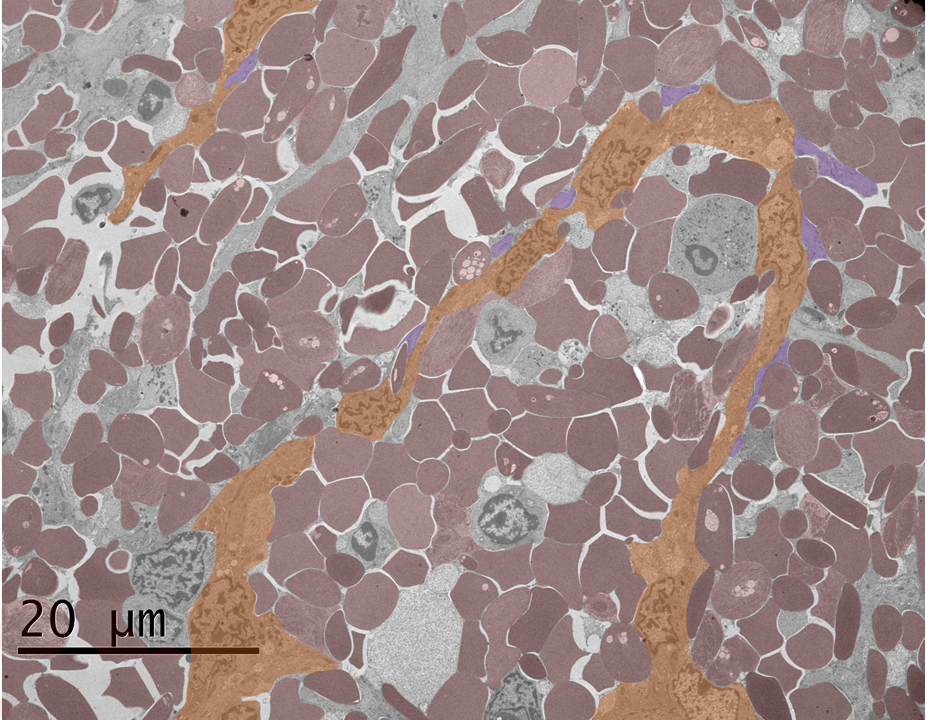NEWS
Read our latest publication in the American Journal of Hematology
Despite the existence of hyposplenism, splenectomy in SCD children removes an organ that still efficiently filters out potentially pathogenic altered RBC.
ABSTRACT
In children with sickle cell disease (SCD), splenectomy is immediately beneficial for acute sequestration crises and hypersplenism (ASSC/HyS) but portends a long-term risk of asplenia-related complications. We retrieved peripheral and splenic red blood cells (RBCs) from 17 SCD children/teenagers undergoing partial splenectomy for ASSC/HyS, 12 adult subjects without RBC-related disease undergoing splenectomy (controls), five human spleens perfused ex vivo with HbSS– and HbAA-RBC, and quantified abnormal RBC by microscopy, spleen-mimetic RBC filtration, and adhesion assays. Spleens were analyzed by immunohistochemistry and transmission electron microscopy (TEM). In circulating blood of SCD and control subjects, dysmorphic (elongated/spherocytic) RBCs were <2%, while proportions of pocked-RBC were 4.3-fold higher in SCD children than in controls. Compared to controls, splenic RBCs were more frequently dysmorphic (29.3% vs. 0.4%), stiffer (42.2% vs. 12.4%), and adherent (206 vs. 22 adherent RBC/area) in SCD subjects. By TEM, both polymer-containing and homogenous RBC contributed to spleen congestion, resulting in 3.8-fold higher RBC population density in SCD spleens than in control spleens, predominantly in the cords. Perfused spleens with normal function displayed similar congestion and retention of dysmorphic RBC as SCD spleens. The population density of active macrophages was similar in SCD and control spleens, with a relative deficit in phagocytosis of polymer-containing RBC. Despite the existence of hyposplenism, splenectomy in SCD children removes an organ that still efficiently filters out potentially pathogenic altered RBC. Innovative treatments allowing fine-tuned reduction of RBC retention would alleviate spleen congestion, the major pathogenic process in ASSC/HyS, while preserving spleen protective functions for the future.
contact : abdoulaye.sissoko@inserm.fr

Array
Clearance of pathogenic erythrocytes is maintained despite spleen dysfunction in children with sickle cell disease
American journal of hematology, 2024, vol., p.
Sissoko Abdoulaye, Cisse Astan, Duverdier Clemence, Marin Mickael, Dumas Lucie, Manceau Sandra, Maître Blandine, Eckly Anita, Fricot-Monsinjon Aurelie, Roussel Camille, Ndour Papa Alioune, Dussiot Michael, Dokmak Safi, Aussilhou Beatrice, Dembinski Jeanne, Sauvanet Alain, Paye François, Lesurtel Mickaël, Cros Jerome, Wendum Dominique, Tichit Magali, Hardy David, Capito Carmen, Allali Slimane, Buffet Pierre
